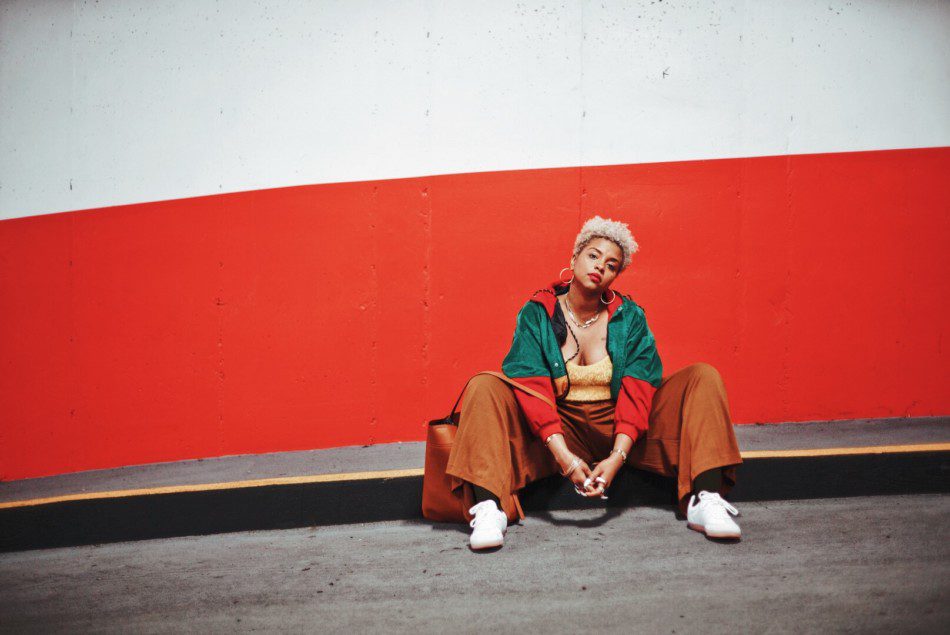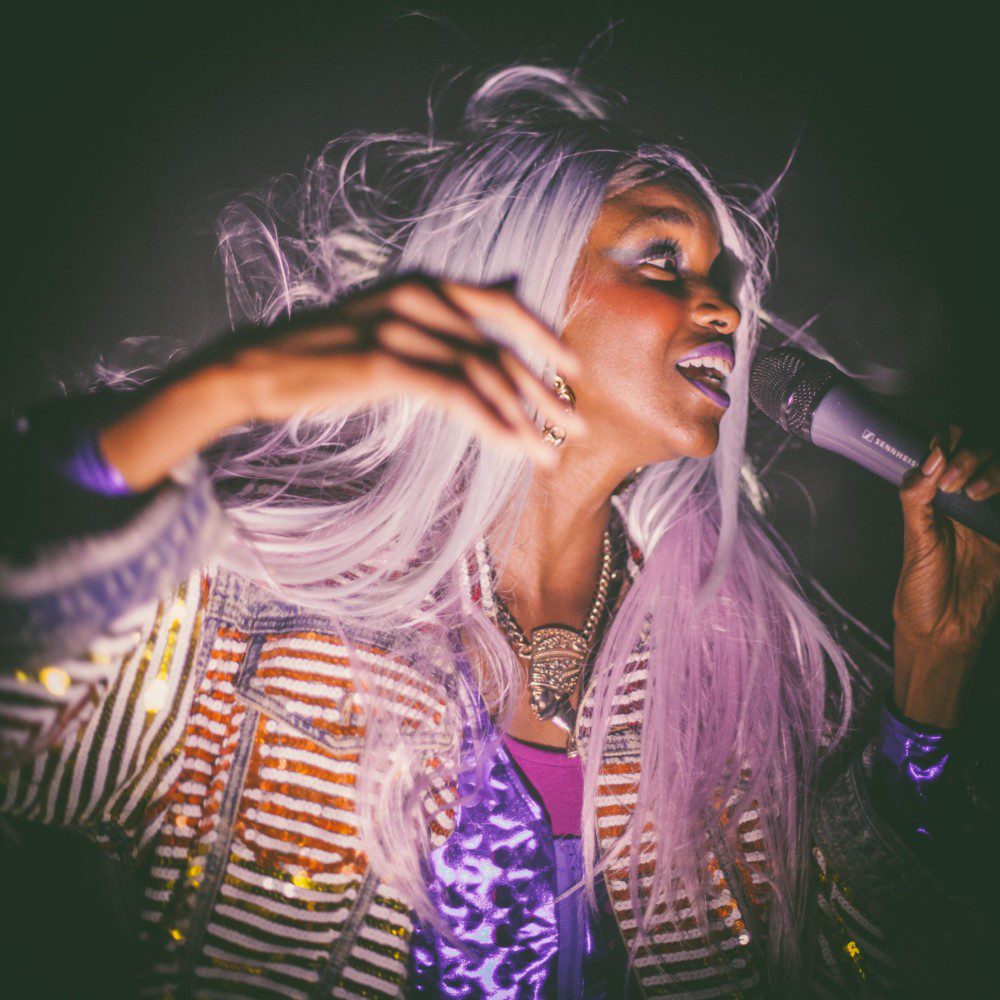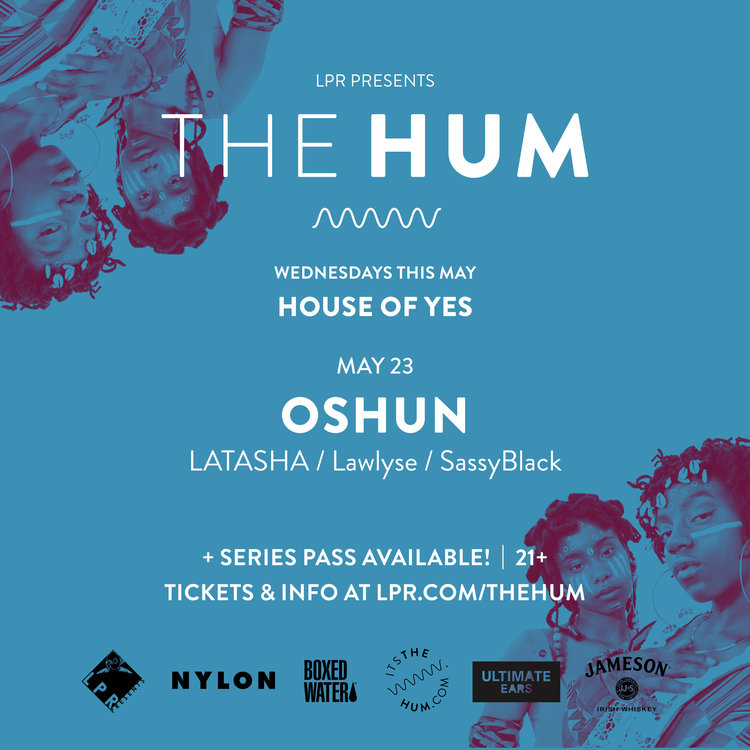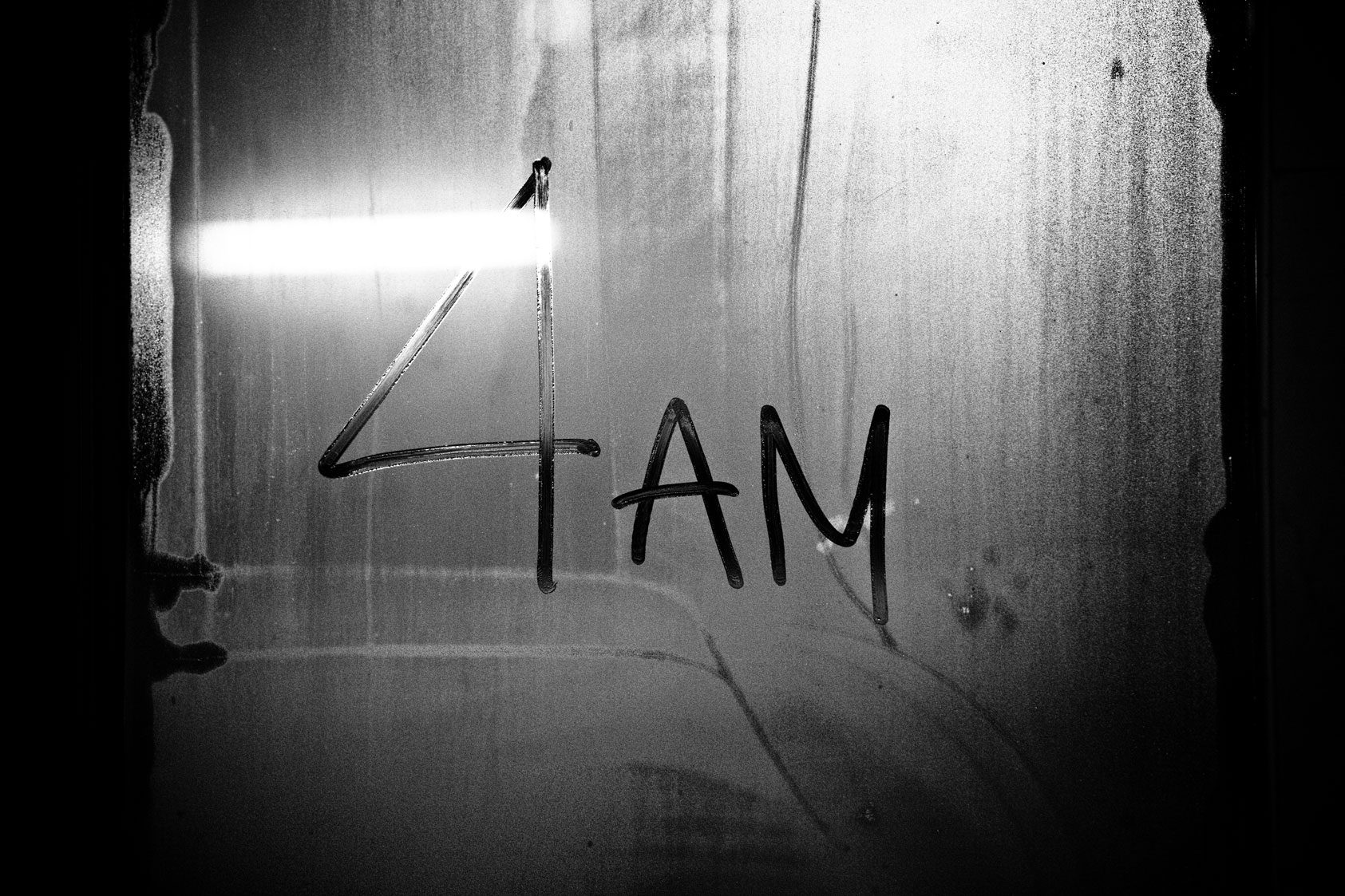INTERVIEW: Latasha & Shasta Geaux Pop Bring Hip-Hop to The Hum This Week

The Hum Series’ House of Yes takeover continues this Wednesday, when Brooklyn music lovers will get to see some of the best female-identified performers in the local hip-hop scene, expanding the typically rock and electronic music oriented curation to a whole different genre. This is the second-to-last performance of the series, which has so far seen the likes of Jessica Lea Mayfield, Bunny Michael, Xhosa, L’Rain, Lou Tides, and many more. This week’s hip-hop oriented bill features Oshun, SassyBlack, Latasha, Lawlyse, and Shasta Geaux Pop.
Headliners Oshun, a hip-hop, soul duo originally hailing from Washington D.C. and now living in New York, spoke with Nylon Magazine about The Hum. The two said that “being a part of The Hum Series is an opportunity for us to show solidarity to creatives across the spectrum. It’s us saying we support art and all the beautiful souls that create it.” Singer-songwriter-producer SassyBlack, echoes that sentiment in the same piece, telling Nylon, “It is important to have showcases, festivals, and events that focus on the greatness of women, female-identifying, and non-binary artists. Our stories are important and need to be heard as often as possible.”
In the last few weeks we have spoken with a number of The Hum artists, who mirror the reflections of Oshun and SassyBlack. The appreciation for this series and its dedication to women in music is a constant statement these musicians have to share. This week, we talked to rapper Latasha and and performance artist and singer Ayesha Jordan, a.k.a. Sasha Geaux Pop, about what they’re looking forward to in this week’s performance.
Latasha

Latasha defines herself as an artist who “finds resonance in speaking on spiritual, social and cultural experiences in her music, promoting a much needed agenda for those looking to find inner peace, specifically young women of color.” As someone who was part of the first iteration of The Hum, she speaks to the changes it has made, and how the stage as become more welcoming to a wider mix of genres.
AudioFemme: What was your first introduction to The Hum?
Latasha: I actually did The Hum show two or three years ago, when [fusion_builder_container hundred_percent=”yes” overflow=”visible”][fusion_builder_row][fusion_builder_column type=”1_1″ background_position=”left top” background_color=”” border_size=”” border_color=”” border_style=”solid” spacing=”yes” background_image=”” background_repeat=”no-repeat” padding=”” margin_top=”0px” margin_bottom=”0px” class=”” id=”” animation_type=”” animation_speed=”0.3″ animation_direction=”left” hide_on_mobile=”no” center_content=”no” min_height=”none”][curator] Rachael [Pazdan] first started The Hum. I think I was one of the first artists to actually get on her bill. Rachael and I have been good friends ever since, so I’m here again ready to throw it down for her on the show.
AF: What’s been your experience watching The Hum grow?
L: I’ve been to one other one and I’m really just proud of how Rachael is taking up a lot of different, beautiful artists to be a part of it. When she first started it was really oriented to bands and more electronic, and it wasn’t really a hip-hop scene. I feel like she’s starting to open up to that world, and I’m really excited about that.
AF: Will you be performing any new pieces made for this residency?
L: Yeah. Me and my DJ [Lawlyse] do a cool little freestyle moment every show, where she just starts a beat and I start rapping. So we’ll probably do something like that for this show.
AF: How do you think the hip-hop community benefits from The Hum?
L: I think it’s an amazing experience for hip-hop, just because I personally find out about so many other artists who are in the city that I would have never known about. Especially women artists – in hip-hop of course it’s very male dominated – so we don’t always get to hear about the other amazing women who are out there. Or we do, but we don’t get the chance to work with each other or on the same stages. So this is really a great opportunity for that to happen. I’m also a big fan of Oshun, who is the headliner of this bill. I’m really excited to see what that is going to be like for the audience, to see diverse women taking over the stages, and I think for hip-hop it’s just about time to have all of us be sharing stages.
AF: What kind of effect does a showcase like The Hum have on your music?
L: For me it’s just really inspiring to be surrounded by so many amazing talents. I remember the first time I did The Hum. I performed alongside a few other artists who are in the electronic world, and also in country. It was just really interesting to have me, a rapper, and then someone doing electronic music, and someone doing country music and all in one space. For my ear it was just really important for me to hear how that could work together in a show.
AF: You experiment with some visual elements in your music and shows; can you talk a little about that?
L: I have a performance art piece that I’ve been touring with called “Olive Dream.” It’s pretty much a multi-media performance piece that has documentary with visual installations of the parts of New York City that I grew up in. It includes dance and rap and poetry and monologue, all mixed together to create this world of my understanding. I’ve been doing that and it’s really exciting. I don’t know if I’m going to be able to do that for The Hum show, but I’m definitely gonna give you guys a little piece of that for the show.
Shasta Geaux Pop
Shasta Geaux Pop is the alter-ego of performance artist Ayesha Jordan, who created her over-the-top persona as a way to score acting gigs while living in Atlanta, developing the project further in collaboration with director Charlotte Brathwaite after moving to New York. Partly inspired by the drunken antics of early-aughties It Girls like Paris Hilton and Nicole Richie, Shasta Geaux Pop is known for her energetic satire which pulls inspiration from classic ’80s ’90s hip-hop. This is her first appearance at The Hum.

AudioFemme: Your work is both musical and theatrical. Can you talk a little about the performance aspect of what you do?
Shasta Geaux Pop: It’s an hour long performance event and it’s highly interactive. It’s kind of like going to a basement get down party with music. There are songs about food, about Kegels, and being drunk and famous. It’s just a ruckus hour of laughter. We sneak a couple surprises in there that kind of catch people off guard. So that’s the theater piece.
AF: Are you going to incorporate your theater pieces into the show on Wednesday?
SGP: A couple of little things. I’m gonna throw some sneaky bits in there. I think we are gonna add in a couple teasers so people can get an idea of what we do outside of just music. It’s not just songs; it’s very much audience engagement and trying to activate people in a way that they are not often activated at a show. It’s not like “stand there listen and enjoy;” it’s a little deeper than that.
AF: Having support from other female artists, and having a space created where that’s possible, how does that differentiate from other experiences that you’ve had performing?
SGP: Well for one, it gives me an opportunity to meet and engage with performers I’ve never met or engaged with before. But also the stuff that I have done in the past has been a combination of hosting and performing. I haven’t done a lot of concert-style performances, because most of the people who are familiar with me have seen the theater piece. They’ll ask me to do a snippet of something for an event. So it’s less focused on women – it’s more just about whatever that event is, or specific to that event. I think a lot of the messages I have in a lot of the songs are directly related to women and our experiences, in a lot of ways. So there’s that aspect of it. It’s bringing people together for a specific purpose, and not just a general evening. It’s nice to have something with an intention.
AF: How do you think that these kinds of nights impact the larger music community in New York?
SGP: It brings together an audience that is just overall more welcoming, because they are coming in with a certain kind of expectation. They know they are coming to see female artists perform, so there’s already an automatic level of support.[/fusion_builder_column][/fusion_builder_row][/fusion_builder_container]





